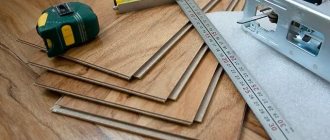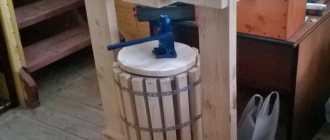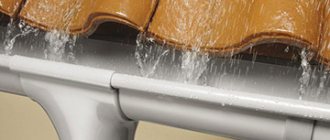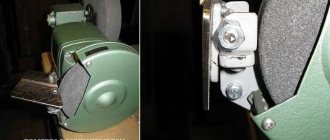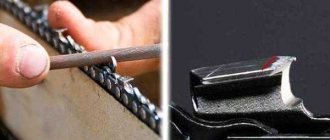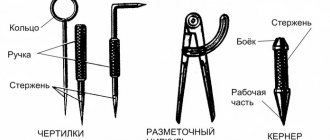As you, dear readers, have already found out, laminate is a floating floor covering. And it assembles into a single structure without the help of glue. But its installation requires devices, not necessarily professional ones, but those without which the flooring cannot be produced. In this article, I’ll tell you what tools are needed to lay a floating floor, what to use to cut laminate flooring, and how you can replace certain tools.
Below I will publish what tools I use in the form of a list and links, and then comments and possible analogue manual or electric mechanisms.
- Jigsaw
- Hammer
- Tamping block
- Steel bracket
- Spacer wedges
- Tape measure, pencil, square
The cost of such a kit in an inexpensive version does not exceed 3,000 rubles. But it may happen that laminate flooring needs to be laid, but the necessary tools are not available or you have to travel far to get them.
Preparing consumables
In addition to the fact that you will need a set of tools for laminate flooring, you need to purchase building materials.
Among them:
- waterproofing film;
- masking tape (to limit the jigsaw);
- ordinary adhesive tape of any color for gluing the joints of the substrate; it is used to prevent the material from sliding during the installation of the laminate;
- a backing for the floor covering, which will eliminate minor unevenness in the screed and serve as insulation;
- silicone sealant that can fill small defects in the concrete surface, such as cracks and crevices;
- leveling mixture, which is necessary to eliminate pronounced defects based on the floor structure.
If you have the materials for laying the flooring, you can begin to select the tools necessary to install the laminate. Some of them are already available at home, others can be found from friends and relatives, and others need to be purchased.
Do-it-yourself bracket for laying laminate flooring – Metalist’s Handbook
Laminate is a practical and beautiful floor covering that is affordable and easy to install. The interior of the entire living space depends on how carefully the material is laid.
To achieve an ideal laminate floor, you need to take care of the necessary tools in advance: prepare a laminate installation kit, choose what to cut the panels with, prepare additional accessories, decide on the use of electric and manual tools.
Each tool has its own characteristics, technical capabilities and operating techniques, which we will discuss in this article. Therefore, after reading to the end, you will understand what tools are needed for laying laminate flooring in order to avoid mistakes and not waste a lot of effort.
Household and professional tools
The floating connection system for laminate flooring allows installation of flooring to be carried out much simpler and easier compared to parquet or porcelain stoneware. Before starting work, you should decide what tools you need to lay laminate flooring yourself, prepare them or, if necessary, buy them.
When selecting devices for laying laminate flooring, first of all, the skill and professionalism of the performer, as well as the volume of work to be done, are taken into account. Taking into account such criteria, the classification of instruments can be presented in two categories:
- household tools;
- professional tool.
The difference between the second and the first is the higher intensity of use and improved ergonomics of the design. To withstand increased loads, manufacturers of professional tools use higher quality materials in their construction, which naturally increases their price.
Advice: If you want to lay a laminate floor in an apartment or house with your own hands on an area of up to 100 square meters, then you should not overpay for professional tools.
It is enough to buy a household one. And if you are planning to install the floor in a cottage with an area of more than 100 square meters. m., it is better to purchase a professional tool.
This will allow you to get the job done faster and you will be less tired.
DIY tools for laying laminate flooring include:
- roulette;
- pencil or marker;
- construction square or metal ruler;
- plastic or wooden block;
- mallet or hammer;
- spacer wedges;
- mounting bracket for laying the last laminate panels;
- any cutting tool for wood or chipboard.
Most of the listed items are probably available in every home owner. Let's take a closer look at each separately.
Roulette
A tape measure is a measuring tool that almost everyone has in their home. With its help, it is more convenient than a metal ruler to measure the lamellas before cutting.
It is recommended to use a product that has an ergonomic shape and clearly marked markings. This will ensure correct measurements and long service life.
To ensure that the tape measure fits well in your hand, use a product with a rubberized body from trusted manufacturers.
Pencil
A pencil is required to mark the sheet.
It is most convenient to use construction pencils that have a thick lead and a shell with an oval or rectangular cross-section, which prevents it from rolling off the surface.
But if you are not going to install laminate flooring with an area of more than 100 square meters. m., then it is quite possible to use a simple clerical pencil.
When marking laminate flooring, you can use a marker, but it is better not to do this. If you make a mistake and mark in the wrong place or on the wrong side, it will be very difficult to remove traces of the marker.
Square
The construction square is a tool for carpentry work. It is necessary for checking planes and mutual perpendicularity between parts.
For household use, the tool is presented in the form of two rulers (one thicker than the other), connected at an angle of 90°. In a professional square, you can additionally measure angles and mark radii.
When laying laminate flooring, it is very convenient to use a square to mark perpendicular lines for cutting off the excess piece of panel.
Hammer or mallet
Each laminate lamella must be pressed tightly against the previous one so that the coating looks as seamless as possible without gaps and cracks.
For these purposes, the board is tapped using a hammer or mallet. It is not always possible to accurately execute a strike and calculate the force.
Therefore, in order not to damage the delicate locks of the laminate, an impact block is additionally used. Sometimes it is called a tamper block.
A medium-sized hammer or mallet should be used to ensure good control over the impact force.
Hammer block
An impact block made of wood or plastic is used to tap the lamellas during installation. It is made of impact-resistant plastic or ash, beech, and walnut wood.
The block is installed on the opposite side from the panel fastening and a mallet or hammer is used to knock the panel to the already installed ones.
Its task is to distribute the load from the impact over a large area and prevent damage to the locking element of the bar.
Spacer wedges
Spacer wedges are designed to install expansion gaps along the edges of laminate flooring. They are pegs of different thicknesses with a slope from one edge to the other.
Plastic or hardwood is used for manufacturing. To carry out repairs in a small area, as an alternative, you can use pieces of laminate or drywall.
Professional parts have a special profile for connecting 2 or more elements in different directions.
Mounting bracket
The mounting bracket for laying laminate is a metal piece for tackling the last lamellas to be laid towards you (as opposed to the block).
It can be sold separately or as a set with a block and wedges.
For household use, the bracket has a simple design, but for professionals, it has a larger area and felt lining.
Set of tools for laying laminate flooring
Almost everything necessary for installation (tape measure, pencil, hammer, hacksaw, corner) is available to every home craftsman. Manufacturers have combined the missing tools into a set for laying laminate and parquet boards, which contains:
- spacer wedges made of wood or plastic (usually in a set of 30 to 50 pieces);
- wooden or plastic impact block for tamping panels;
- mounting bracket for laying the last laminate lamellas.
This set of tools for laying laminate flooring can be purchased in stores specializing in the sale of laminate flooring. Prices for devices are affordable. The effectiveness of using auxiliary devices fully justifies the cost of their acquisition.
Sample
Experienced flooring installers always have a template in their arsenal to measure curves.
It allows for precise adjustment of planks in hard-to-reach places, near protrusions or around utility lines. Using a template, you can easily and quickly draw a cutting line with minimal error.
The use of such a tool will help to lay the laminated flooring more efficiently.
Cutting tool
Laying laminate flooring is not complete without adjusting the panels to the required dimensions. It is not possible to install using only solid laminate sheets. Panels of material have to be cut to size when installing each row.
For these purposes, you can use any wood cutting tool, since the composition of the laminate is very similar in structure to wood. The simplest option is a handsaw or hacksaw, which a thrifty owner has in every home.
Tip : before you start cutting, you should stick masking tape on this place, which will prevent chips from forming at the cut site. It is recommended to lay the board face up.
If you want to speed up the process and reduce physical costs, it is advisable to use an electric tool: a jigsaw, grinder or circular saw.
Read more about laminate cutting tools in the article “Tools for cutting laminate.”
There is an opinion among craftsmen that in order to lay laminate flooring, it is enough to have a minimum set of tools, including a tape measure, a construction pencil, a square, a hammer, a jigsaw or a hacksaw, and the most valuable thing is skill. You can get by with such a minimal set if you have to lay laminate flooring in a small area, with clear, even surfaces without protrusions or partitions.
Desirable accessories for floor renovation include:
- masking tape to protect the decorative layer when sawing off unnecessary parts of the laminate planks;
- a screwdriver or drill equipped with a crown attachment for cutting holes for pipes and communications;
- a construction or stationery knife for opening packages of material;
- hydro or laser level to check the horizontalness of the base;
- personal protective equipment: gloves, goggles, respirator, etc.
Important! Do not neglect the use of PPE. Gloves will protect the master's hands from accidental scratches, light blows and splinters.
When cutting laminate flooring, a lot of sawdust and fine wood dust is formed.
Glasses will prevent shavings and sawdust from getting into your eyes, and a respirator will protect your lungs from fine wood dust, which can be saturated with resins containing formaldehyde.
Professional tools for laying laminate, as a rule, have an expanded range of components.
A professional needs to quickly make decisions in the most unforeseen and non-standard situations, which requires the presence of various non-standard devices and devices for installation: a mounting clamp, various templates, a professional square, a protractor, a metal bracket, multi-level finishers and much more.
A professional tool is always of high quality. The use of such a tool is designed for long term and intense use.
Therefore, it is characterized by the best ergonomic solutions and competent engineering elaboration of individual parts. To produce such products, materials with a high level of strength and quality are used.
List of required tools
Most of the tools that will be needed to carry out floor repairs are used by home craftsmen in everyday life. The rest can be purchased either as a set or individually.
The main tool is considered to be an electric jigsaw, shown in the photo, with a power of at least 500 W. It is advisable to choose products from a well-known manufacturer in the mid-price category. You should not purchase a model that is too cheap, as it will quickly become unusable due to its inability to withstand the load. If the jigsaw breaks down, work will have to be stopped until a new tool is purchased.
The basic set of tools for laying laminate flooring that should be available:
- Hammer or mallet . Needed for fitting and making precise connections between floor planks. Using a hammer, both individual boards are snapped into place and they are tapped. The back of this tool allows you to easily insert the last row of slats.
- 5 meter tape measure . The main thing is that the welded iron end stays firmly on it. It is used at the stage of preparatory work to accurately measure the area of the floor covering.
- Stationery knife . During the work process you will need to open packages of building materials. They cut out the substrate. True, modern material is easily broken along special lines.
- Simple pencil . It is desirable that it has a soft stylus. It is used to mark the laminated coating. In case of an error, the thin mark can be easily removed.
- Square (25-30 centimeters). Used for marking materials.
- Hacksaw (jigsaw) . Used in the process of cutting and sawing dies. A hacksaw with a wide blade with fine teeth will certainly be required if there is no gap between the base of the floor surface and the bottom of the door frame. As an alternative, you can use a grinder, but using it to make an accurate cut is not easy, especially for a non-professional.
- Protractor or protractor . It may be necessary when it is decided to lay the laminate diagonally. You need to set it to an angle of 90 degrees and mark the lines along which the elements will be trimmed.
- Finisher for laminate . This toolkit is needed for the final padding of the panel.
- Drill . Can be manual or electric. It is used when it is necessary to make a hole for self-tapping screws when arranging a screed from plywood sheets. You will also need a drill to prepare the base for installing the flooring.
In addition to the above tools, you will need the following additional (auxiliary) tools:
- Clamp for laminate (metal bracket).
- Restrictive wedges.
- Tamping block.
- Feather drills.
Tools and materials needed for preparatory work
Preparatory work when laying laminate flooring is sometimes more important than the actual installation. The base for installation must be prepared.
Materials for preparing the base:
- Self-leveling mixture or self-leveling floor.
- Sealant for sealing gaps and cracks in the subfloor.
- Vapor barrier film.
- Substrate.
The use of a self-leveling mixture helps prepare an almost ideal base for laminate flooring. At the same time, the use of such material or self-leveling floor requires the mandatory use of a vapor barrier layer.
Floor with vapor barrier (black stripe), cork underlay (yellow stripe) and laminate.
A backing made of foamed polymer or thin cork allows you to remove air voids from under the laminate, eliminating the creaking of the lamellas when walking on the laminate.
The set of tools for preparatory work includes: plaster rule, construction or stationery knife, tape.
Plastering rule
The name of the instrument is pronounced this way – usually with an emphasis on the letter “i”. It is an aluminum or plastic rail, 1.5 to 3 m long.
Aluminum rule
The tool is designed to control the evenness of surfaces when constructing walls, floors, and ceiling coverings. When checking, the rule is applied to the area being checked and the number and depth of voids formed between the lath and the surface are noted. A coating that creates a minimum number of shallow voids will be considered high-quality.
Despite its simplicity and component-free design, the Rule is a very fragile and demanding instrument. It is enough to drop the rule 2-3 times on an uneven surface from the height of a person’s shoulders for it to lose its accuracy.
Construction or stationery knife
A tool that will never be superfluous on a construction site. To trim something, cut something, even just to open a package of material - you need a knife everywhere.
Construction knife with replaceable blades 25 mm
Scotch
Necessary for gluing parts of the substrate to each other and to the floor so that it does not move during operation. Some types may rustle, so the tape should be checked before starting work.
Clamp for laminate
It is used to tamp the edge laminated boards mounted along the walls of the room. A laminate bracket is used to evenly distribute impacts along the entire length of the coating. The clamp is a curved plate. To ensure effective operation, its thickness must be at least 5 millimeters. At the ends of the metal plate there are bends located in different directions at right angles. One end of the staple is wider than the other.
Tamping will require some effort and therefore it will be difficult to do without a hammer. A staple for laying laminate helps keep the edges of the boards intact. You can make a clamp yourself. The wide end is applied to the end part of the lamella, and the narrow end is hit with a hammer.
Household and professional tools
The division of tools into professional and household is determined by the requirements for each group. A professional tool is designed for long, intensive work and therefore is made according to more stringent specifications. The load on household models is less, and therefore the requirements are softer. It is precisely because of the rigidity of the indicators that a professional tool costs much more than household models.
Household model of a Bosch electric drill
Professional and household models of the tool may hardly differ in appearance. To make selection easier, manufacturing companies put the inscription “professional” on pro models.
Professional drill Bosch
There are a number of criteria by which a tool is selected:
- Type of tasks performed by the tool.
- Scope of work.
- Technical characteristics of the model.
- Price.
If you need to do small work 1-2 times a year, then why buy an expensive professional tool? A household model will cope with this task.
Restrictive wedges
Needed to lay planks near the walls. With their help, it will be easy to provide a gap of 8-12 millimeters. This distance is necessary when the floor covering tiles expand as a result of changes in temperature and air humidity in the off-season. The created gap gives the slats some freedom, as a result of which the floor covering will not warp.
The laminate wedges are removed after installation is completed. By the way, the gaps on the finished floor are not visible; they will be covered with baseboards.
A little about the material
Laminate is one of the most popular types of flooring, which can often be seen in apartments, offices, conference rooms and other rooms. This material is valued by consumers for its neat appearance, large selection of colors and textures, ease of installation and fairly long service life. In recent years, despite the emergence of other new types of coatings, the demand for laminate is only growing.
Laminate panels
Laminate structure and layers
In general, laminate appeared on the construction market about 30 years ago and almost immediately it became popular, as it made it possible to abandon linoleum and not spend money on expensive parquet. Laminate can be called an artificial analogue of parquet, only with a more affordable price.
Laminate is very popular
This material is multi-layered, in total there are 4 main layers that make up its composition. The base is HDF or fiberboard, which makes the laminate quite durable and gives it a certain rigidity. The lower part of the fiberboard is covered with a protective layer, which will prevent the material from absorbing moisture from below and protect it from abrasion. And on the top of the fiberboard there is a decorative layer with a certain pattern applied to it. In this case, the pattern can imitate stone, wood, tiles and other types of floor coverings. The topmost layer of the lamella is a protective layer made of special resins that protects the decorative layer from external factors - moisture, temperature, abrasion.
On a note! The strength and moisture resistance of laminate flooring varies depending on its class. There are more expensive or cheaper coating options, the cost of which will depend on how durable or water resistant the material is.
Laminate flooring
In general, for arranging floors in an apartment, it is recommended to buy class 32 or 33 laminate - this is a very durable material that, if installed correctly, will last for decades. If you plan to install this type of coating in the bathroom or kitchen, it is recommended to also purchase moisture-resistant laminate.
Laminate classes
Prices for Tarkett laminate
Tarquette laminate
Tamping block
As the name implies, its main function is to tamp each die. It helps to clearly join the boards together. Thanks to its use, all lock connections remain intact and undamaged.
The tamping block for laminate flooring is made not only from wood, but also from plastic. In order for it to last for a long time, when purchasing it you should pay attention to the cost of the product and quality. The block should weigh approximately 1.5 kilograms. When tamping, you need to ensure that the edge applied to the board is even. In the event that the surface of the bar is even slightly damaged, it must be replaced.
If you do not have a tamping block available, you should not use a laminate hammer. You can solve the problem by using an unnecessary piece from the plank. It is necessary to connect the locks and carefully tap the die. The effect of using a segment will be similar to that of a block.
Work on installing floors made of laminated panels
Laying laminate flooring is done quite quickly, especially if all the necessary equipment is used. Let's look at the process step by step.
Step 1. The laminate in packages is laid inside the room where the repair work will be carried out. The ends of the packs do not open. The laminate is left in this form for 2 days. This is necessary so that the material adapts to the conditions in which it will be used. It is especially important to follow this procedure in winter, when the slats are stored in cold rooms and then placed in warm ones.
The laminate needs to be left indoors for 2 days
Step 2. During the time during which the laminate acclimatizes, the floor in the room is thoroughly cleaned from the construction level and leveled.
The floor needs to be thoroughly cleaned
Step 3. Check the evenness of the rough foundation using a building level. The permissible height difference is 1-2 mm per 1 m.
Checking the evenness of the subfloor
Step 4. The floor surface is covered with a vapor barrier film. The strips of material are laid overlapping (15-20 cm) and secured with tape.
Laying vapor barrier film
Step 5. Excess film is trimmed using a utility knife. The film is rolled onto the walls to the height of the baseboard.
Trimming excess film
Step 6. The vapor barrier film is covered with a backing under the laminate, which will allow the remaining unevenness to be leveled out. The substrate strips are laid end to end, without overlap.
Types of underlays for laying laminate
Underlay for laminate
Step 7. Packages with lamellas are carefully opened along the edges using a stationery knife.
Important! Each lamella is inspected for defects before installation. Damaged laminate cannot be used.
Opening the package with laminate
Step 8. The slats are laid from the wall parallel to the window that provides maximum light. The first row of panels is laid with a ridge against the wall, while special wedges are inserted between the wall and the lamellas to maintain the compensation gap. Installation of the laminate is carried out at positive temperatures (18-22 degrees) and air humidity in the range of 40-65%.
The first lamellas are being laid
Attention! If the air humidity is more than 70%, then laying a simple laminate cannot be done.
Step 9. The ends of the panels are connected as follows: the ridge is carefully placed in the groove of the previously laid panel, and it is struck with a hand or a rubber hammer. Thus, the lock latches.
The ends of the laminate panels are connected
Step 10. In the area of the doorway, the jambs are cut with a hacksaw, after which another lamella is inserted into the gap, as if placed under the door jamb.
Laying laminate flooring around the doorway
Step 11. The second row of panels is being installed. In this case, the ridge of the next panel is inserted into the groove of the previously laid one at an angle of 20 degrees. Then, with light pressure, the panel is laid on the floor.
Laying the second row of panels
Step 12. In subsequent rows, the panels should be laid in such a way that their joints are shifted relative to each other by at least 40 cm.
The panel joints should move relative to each other
Step 13. The entire floor covering is laid in the same way. After which the plinth is fixed along the walls. The work has been completed.
At the end, the floor plinth is installed
Master Class. Technology of laying laminate diagonally.
When laying diagonally, consumption increases by approximately 15-30%
Calculation diagram for laminate flooring when laying diagonally
Laying diagram showing the direction of laying the panels
Cleaning and priming the subfloor
Base insulation and underlayment installation
Marking the corner panel
Marking and installation of subsequent canvases
Completion of laminate installation work
Feather drills
They are used for precise and accurate drilling in the manufacture of holes in laminate intended for heating drains or laying other utilities, including water supply. The holes need to be made 4-6 millimeters larger than the cross-section of the laid pipes.
Thus, almost all the auxiliary tools necessary for installing the laminate can be easily replaced with a more convenient and less expensive analogue that does not affect the quality of the assembly work.
Tool for laying laminate flooring at home
Laminate is a practical and beautiful floor covering that is affordable and easy to install. The interior of the entire living space depends on how carefully the material is laid.
To achieve an ideal laminate floor, you need to take care of the necessary tools in advance: prepare a laminate installation kit, choose what to cut the panels with, prepare additional accessories, decide on the use of electric and manual tools.
Each tool has its own characteristics, technical capabilities and operating techniques, which we will discuss in this article. Therefore, after reading to the end, you will understand what tools are needed for laying laminate flooring in order to avoid mistakes and not waste a lot of effort.
conclusions
When preparing to install a laminate floor with your own hands, think in advance about what you will use to cut the laminate (hacksaw, grinder or jigsaw) and prepare the necessary tools for installation (tape measure, pencil, square, hammer and other accessories). The impact block, wedges and mounting bracket can be purchased as a set for laying laminate flooring in specialized stores.
If you are laying floors in your apartment and do not regularly repair floor coverings, then there is no need to overpay for professional tools. The benefits of purchasing them will only appear with intensive use.
Using new tools
Most of the modern tools that have recently appeared on the domestic construction market are recommended by German engineers:
- Machine for cutting PVC floor slabs . It provides silent cutting of panels without generating dust. Therefore, when cutting lamellas, you will not need to use a hacksaw or jigsaw. The machine cuts at an angle of 90 degrees. The design feature of this device is its ease of use, since no special effort is required. This is possible due to the special structure of the machine blade.
- Square with automatic angle division . This device allows you to quickly and effortlessly measure the angle of contacting walls and easily transfer the measurement result to the laminate board. The working scale of such angles starts at the 30-degree mark.
- Template for marking the coating . Helps to very quickly mark the cutting location of the last row. An analogue of such a tool can be found among everyday items.
- Contour for drawing bends and shapes of lamellas . The device is necessary for quickly marking cutting lines. It easily copes with displaying shapes and then applying them to the laminate for further cutting, for example, a semicircle for utilities or decorative elements. Thanks to the use of an outline, it is possible to combine the design of different templates.
This article provides information on what tools are needed to lay laminate flooring and for what specific work they are needed. Whether a home craftsman has a basic or slightly expanded set of tools in his hands, this will not affect the quality of the work. For example, the result of the cut is not affected by what it is made with - a hacksaw or a jigsaw. This nuance will only affect the timing of the work.
Do-it-yourself metal bracket for laying laminate flooring
Laying laminate flooring is not a difficult task. The manufacturers took care of this. They thoroughly thought through the design of the lamellas and how to connect them to each other, so installation of the flooring is quite affordable
A little about the material itself
As mentioned above, the structure of the laminated board is designed in such a way that it does not require fastening to the base or gluing the seams. Laminate parquet floors are laid in a floating manner.
This means that the individual elements of the covering are firmly fastened together with special locks cut along the perimeter of the board.
The connection takes place according to the tenon-groove principle, only the tenon and groove have a complex profile, which increases the reliability of the connection.
The entire floor plane, assembled from individual elements, slides freely along the substrate on the base. “Glides freely” is, of course, a strong word.
Who will give him such an opportunity: they will put heavy furniture on top of the floor. But nevertheless, some backlash is still present.
Therefore, it is necessary to leave a damping joint of 10-15 mm around the perimeter of the floor covering. This gap will subsequently be covered with a plinth.
The usual way of laying laminate flooring - the most common - is "deck". They start with a whole board, join the next one to it, and so on until the wall. The last board, if necessary, is cut to the required size.
The remaining trim, if it is more than 200 mm, is used as the start of the next row. If a whole number of boards are laid along the length of the room, without trimming, or if the trim remains too short, before starting the next row, cut a whole board and start with half.
With this method, the transverse seams are shifted - they turn out “in a running start”.
What you need
From the described installation technology it is clear that the set of tools for working on installing a laminate flooring is not large. When installing laminate flooring with your own hands, the following kit will be sufficient:
- pencil for marking;
- measuring instruments - tape measure and square;
- fine-tooth hacksaw or electric jigsaw;
- knife or scissors for cutting the substrate;
- a hammer, preferably with a rubber head, but if the laminate has a Click type lock, then you won’t need to hit the boards with a hammer; they snap into one another;
What about special kits for laying laminate flooring? Let's see what the manufacturer put in this set. Kits from different manufacturers are available for sale: FIT, Quick-Step, FLINST-001, and others. Their composition is the same. The set includes:
- mounting wedges;
- driving block;
- metal bracket;
As intended by the manufacturer, wedges are used to create a damper joint between the covering and the wall. The boards are tapped using a hammer block. It is necessary so as not to damage the lock tenon on the board when struck with a hammer. The driving block has the same groove as the lamella. The block is put on the protruding part of the lock, the blow is made on the block.
Well, a metal bracket for laying laminate will be needed (attention!) only once: to install the last, finishing board. There will be a wall there that will interfere with installing the last board. The photo shows what this thing looks like.
There are no words: the devices are very necessary and convenient. But are they really needed to purchase them for almost fifty rubles, and even more so, to find out how to make a laminate bracket with your own hands, and what’s the funniest thing: having learned the dimensions of this device, try to make it with your own hands.
Where does such skepticism come from, you ask?
Why then do they sell mounting kits and a separate metal bracket? Firstly, a terrible bourgeois secret: most things are sold not so that the consumer is comfortable, but so that the consumer buys, and therefore brings profit to the manufacturer and seller. Secondly: for a professional flooring installer who lays hundreds of square meters of flooring every month, making the production process easier and faster is essential.
Some of them actually use a mounting bracket. Only this tool is not exactly the metal squiggle that is sold in sets. By the way, many professionals can do without wedges, blocks and metal brackets. Now I'll tell you how.
How to do without a metal bracket
If you plan to do the work of laying flooring from laminated panels with your own hands, then the bracket for laying the laminate, as well as the wedges and block for driving in, can easily be replaced with improvised means. Let's look at the stages of work:
- Damper seam. The required technological gap is made within 10-15 mm. And surgical precision is not necessary in this process. Tolerances “by eye” are quite acceptable, the main thing is that the gap is not larger than the baseboard can cover. If you are a neat person in life, and measuring by eye is not suitable for you, use scraps of laminate as wedges - its thickness is quite enough to create the required distance between the covering and the wall.
- Knocking the board. Let us remind you: a Click type lock does not require the use of force: the board is slanted into the groove with a tenon, and then lowered into a horizontal plane. The lock latches itself, without much effort. If the lamellas have a different type of lock or you think that it wouldn’t hurt to knock the board up a little, use a piece of the same laminate to prevent the tenon or groove from breaking. Place the piece on the spike and give it a good whack – the lock will remain intact.
- Finish board. To install the last board, use a wooden wedge: cut any scrap wood into a right triangle. Install it so that one of the legs looks up, the second rests on the wall, and the hypotenuse rests against the edge of the board. Carefully drive the wedge in - it will push the board into the groove. Just remember to protect the wall. For example, a metal ruler or other similar object. By the way, you will have to protect the wall even if you use a bracket. In this case, you will need to place a lining under the bracket so that it does not damage the floor.
- About making the bracket yourself. If a bracket for laying laminate flooring with your own hands gives you no rest, and you are determined to make it yourself, you will need a metal strip. It must be made of steel. The thickness is such that it can be bent, but sufficient so that it does not bend from the force applied during work. Its size is not important. The strip needs to be bent in the shape of the letter Z. The tool looks like a mounting tool. If necessary, it is with the mounting tool that you can replace the metal mounting bracket.
What you might need to repair laminate flooring
Although the laminated coating is scratch-resistant, it can be damaged. The appearance of flaws does not mean that the panel is damaged. It can be restored.
All materials are sold in large construction stores and have a long shelf life. Always keep something from this list at home to fix a scratch in time.
What tools are needed to lay laminated flooring with an adhesive layer?
Vinyl adhesive laminate is not yet very popular. It is often used even over old worn laminate flooring. Its installation is simple and does not require special tools. To glue flexible laminate you will need:
If you have vinyl laminate flooring without an adhesive base, additionally purchase glue and a fine-toothed spatula.
How to cut laminate or parquet boards!?
It is best to cut laminate flooring with a jigsaw. I use a Makita 4329 jigsaw with a power of 450 watts and a cost of about 3,000 rubles. The Makita is not heavy, fits comfortably in the hand, and has enough power to cut any type and thickness of laminated floors.
Personally, it’s hard for me to imagine my work without an electric jigsaw. Since during installation it is necessary to make transverse and longitudinal cuts. This tool is quieter than most other electric saws, produces relatively little dust, and is inexpensive. An article about choosing jigsaw files.
As an alternative, it is possible to buy the cheapest jigsaw for laying laminate in Leroy-Merlin for 461 rubles at the time of writing the review (January 2021) or in Petrovich, also with a power of 400 watts, but the cost is 1,450 rubles.
What you might need to repair laminate flooring
Although the laminated coating is scratch-resistant, it can be damaged. The appearance of flaws does not mean that the panel is damaged. It can be restored.
Cover minor defects with a wax pencil
.
Retouching furniture marker
and
wood sealant
Repair serious damage with a plaster
and
sawdust
.
All materials are sold in large construction stores and have a long shelf life. Always keep something from this list at home to fix a scratch in time.
